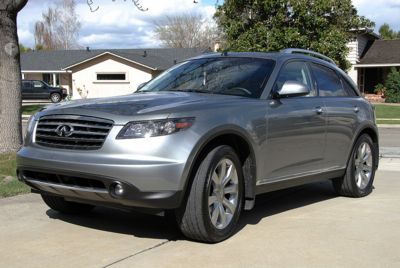I’ve begun re-reading Berkshire Hathaway’s historic letters to shareholders. In the letters from the late 1970’s / early 80’s, Buffett spends a lot of time describing the increasing ‘hurdle rate’ investors should demand due to the rampant inflation of the time period. It is hard to believe, but annual CPI inflation reached above 16% here in the United States in the early ’80’s. Berkshire’s book value was increasing nicely in this period, but Buffett reminded investors they must account for inflation and taxes. The return of a taxable investment (ie. stocks, corporate bonds) must beat the inflation rate experienced during the holding period in order for the investor’s pricing power to have increased. And its not just inflation investors must account for. Investment returns are eaten up by taxes as well. Buffett referred to this combined “Misery Index” of inflation and investment taxes as the minimum ‘hurdle rate’ of return an investor should seek.
High rates of inflation create a tax on capital that makes
much corporate investment unwise – at least if measured by the
criterion of a positive real investment return to owners. This
“hurdle rate” the return on equity that must be achieved by a
corporation in order to produce any real return for its
individual owners – has increased dramatically in recent years.…For only gains in purchasing power represent real earnings on investment.
If you (a) forego ten hamburgers to purchase an investment; (b)
receive dividends which, after tax, buy two hamburgers; and (c)
receive, upon sale of your holdings, after-tax proceeds that will
buy eight hamburgers, then (d) you have had no real income from
your investment, no matter how much it appreciated in dollars.
You may feel richer, but you won’t eat richer.…For example, in a world of 12% inflation a business earning
20% on equity (which very few manage consistently to do) and
distributing it all to individuals in the 50% bracket is chewing
up their real capital, not enhancing it. (Half of the 20% will go
for income tax; the remaining 10% leaves the owners of the
business with only 98% of the purchasing power they possessed at
the start of the year – even though they have not spent a penny
of their “earnings”).Warren Buffett, 1980 Letter To Shareholders,
Buffett even compared Berkshire’s return against the return received from gold and oil. During this time he often referred to the return an investor could receive from tax-free muni bonds as well. From the 1981 Letter:
During the past year, long-term taxable bond yields exceeded
16% and long-term tax-exempts 14%. The total return achieved
from such tax-exempts, of course, goes directly into the pocket
of the individual owner. Meanwhile, American business is
producing earnings of only about 14% on equity. And this 14%
will be substantially reduced by taxation before it can be banked
by the individual owner. The extent of such shrinkage depends
upon the dividend policy of the corporation and the tax rates
applicable to the investor.Thus, with interest rates on passive investments at late
1981 levels, a typical American business is no longer worth one
hundred cents on the dollar to owners who are individuals. (If
the business is owned by pension funds or other tax-exempt
investors, the arithmetic, although still unenticing, changes
substantially for the better.) Assume an investor in a 50% tax
bracket; if our typical company pays out all earnings, the income
return to the investor will be equivalent to that from a 7% tax-
exempt bond.
Warren Buffett is often asked at Berkshire’s annual shareholder meeting what is the rate of return (hurdle rate) he seeks when investing in stocks. I’ve found several references to 13% (early 2000’s) and 15% (mid-90’s). On reading his letters, I propose that Buffett’s thinking along these lines is:
Minimum Hurdle Rate on taxable investments = (Inflation rate) + (Yield on long-term tax-free muni bonds)/(1-Cap. gains tax rate) + (Equity Risk Premium)
Diving in to each of these:
(Inflation rate): As Buffett has described, inflation is quite mean-reverting. I think Buffett would actually use the average of ‘current inflation rate’ and ‘long-term average inflation rate’. In a late 1990’s Fortune article Buffett described inflation as mean-reverting and mentioned 4.3% as the long-term rate of inflation. So the initial equation factor becomes ((Current Inflation) + 4.3%))/2
(Yield on Long-Term Muni Bonds): Buffett referred to a basket of national Muni bonds as the safer, tax-free alternative to stocks and other bonds. Muni bonds offer another advantage as well – they have a fairly wide range of credit ratings (ie. AAA to A and lower). So for an individual stock you are reviewing, you might use the muni yield which has the same credit rating as your stock (ie. AAA rated stock use AAA rated muni bond rate). National muni bond yields can be found here.
(1- long term Capital Gains tax rate): This factor ensures the taxes you pay after owning the stock or other taxable investment at least 1 year do not take away from your final purchasing power. The current capital gains tax rate is either 0%, 15% or 20%, depending on your tax bracket. For most investors it is 15%, so this factor is 1-0.15 = 0.85
(Equity Risk Premium): Without an ERP, the equation results in a final return that only matches the yield on long-term tax-free Munis. Obviously you expect a higher return from stocks vs muni bonds. I’ve seen ERP estimates from 2% to 6%. I’ll use an average 4%.
2015 Minimum Hurdle Rate (era of low inflation, low yields, relatively low taxes)
Current Inflation = 1.6%, Long-term AAA Muni Bond Yields = 2.65%
2015 Hurdle Rate = (1.6% + 4.3%)/2 + 2.65%/0.85 + 4.0% = 10%
1981 Minimum Hurdle Rate (era of high inflation, high yields, higher taxes)
Inflation = 16%, AAA Muni Yield = 14%, Capital Gains tax rate = 20%
1981 Hurdle Rate = (16% + 4.3%)/2 + 14%/0.80 + 4.0% = 31.7%
Quite the difference. 1981 was of course a historically high era in the U.S. for inflation. And taxes were higher as well.
How to Use This Equation:
Buffett was referring to the necessary minimum Return on Equity (ROE) of stocks he was evaluating for investment. I believe the equation can also be used for inputs into stock Discounted Cash Flow (DCF) calculations. So right now you might use a 10% discount rate. Then when inflation returns and other rates respond by rising, just remember to adjust your requirements higher.




